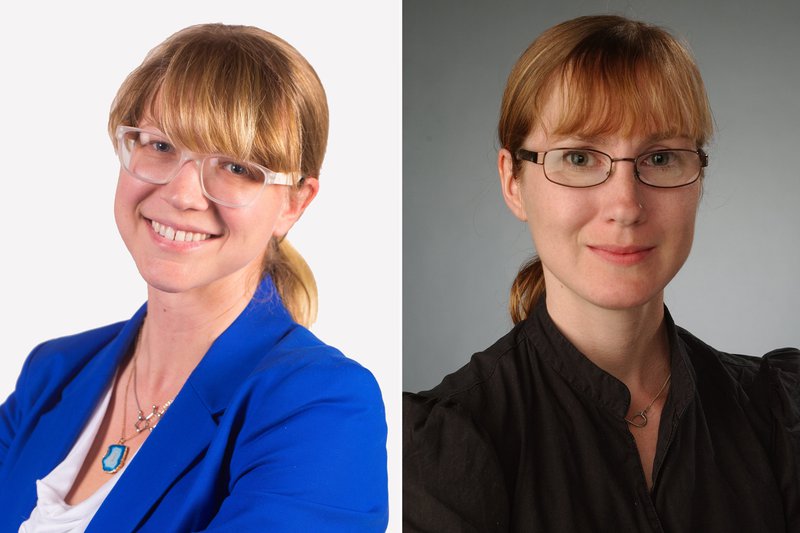
by Laura Wallis
How do cells take the shape they do and perform their functions? The enzymes and molecules that make them up are not themselves living—and yet they are able to adapt to their environment and circumstances, come together and interact, and ultimately, create life. How exactly all of that happens involves some very big questions, the answers to which will be crucial in paving the way for new biotechnologies and other advancements.
The Alfred P. Sloan Foundation, a private, nonprofit grantmaking organization, started its Matter to Life program to begin to answer some of them. The program’s stated goal is “To sharpen our scientific understanding of the physical principles and mechanisms that distinguish living systems from inanimate matter, and to explore the conditions under which physical principles and mechanisms guide the complexification of matter towards life.”

To that end, the program awarded Jennifer Ross (left) and Jennifer Schwarz (right), professors in the Department of Physics and members of the BioInspired Institute, a three-year grant to explore what they’ve described as a fundamental unanswered question about the functionality of cells and the energy and entropy landscape of cell interiors.
“There is a lack of quantitative understanding of the principles governing the non-equilibrium control knobs inside the cell,” Ross and Schwarz explained in their proposal. “Without this knowledge we will never understand how cells work, or how we can replicate them in synthetic materials systems.”
They’ve chosen to focus their work on one very particular aspect of the biology of cells, the concentrations of protein molecules within them known as protein condensates, and specifically their liquid-liquid phase separation (LLPS), which they describe as the “killer app” for the sculpting of energy and entropy in the cell.
“Liquid-liquid phase separation is when two liquids separate, like oil and water,” Ross explains. “The proteins separate out [into droplets] and make what we think of as membrane-less organelles. We're interested in how both energy-using systems and entropy-controlling systems can help to shape those organelles.”
They’re hoping to gain understanding into how cells self-organize without a “manager”—in this case, a membrane to act as a physical containment system—as well as how they react and adapt to their environment.
“This droplet formation is so sensitive to temperature and its surroundings,” says Schwarz. “The cell knows, A ha! The temperature is increasing, so the environment is slightly different. So…I'm going to adapt.”
Ross is serving as principal investigator, and with graduate student assistance, will be performing reconstitution experiments to explore these processes, while co-principal investigator Schwarz and her team will be delving into the theoretical side of the science using predictive simulations. The three-year grant will not only support that work but also funds a paid undergraduate as well as two local high school students through summer programs.
The hope is that a better understanding of cell behavior at this level could ultimately lead to breakthroughs in the development of smart synthetic materials. “Imagine a road-paving material that could identify when a pothole develops and heal itself,” Ross says. It’s just one example of countless possibilities for learning from biological systems.
